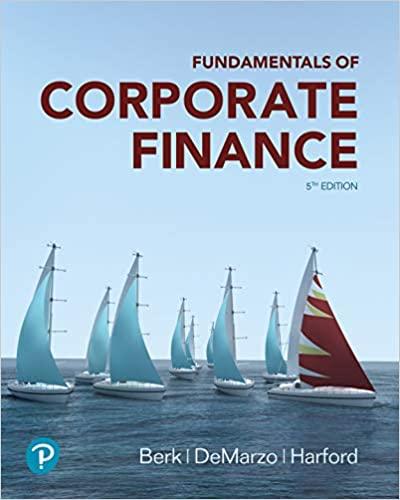Your uncle owns 10,000 shares of Walmart stock. He is concerned about the short-term outlook for Walmarts
Question:
Your uncle owns 10,000 shares of Walmart stock. He is concerned about the short-term outlook for Walmart’s stock due to an impending “major announcement.” This announcement has received much attention in the press so he expects the stock price will change significantly in the next month, but is unsure whether it will be a profit or a loss. He hopes the price will increase, but he also doesn’t want to suffer if the price were to fall in the short term. His broker recommended he buy a “protective put” on the stock, but your uncle has never traded options before and is not much of a risk taker. He wants you to devise a plan for him to capitalize if the announcement is positive but still be protected if the news causes the price to drop. You realize that a protective put will protect him from the downside risk, but you think a strategy of purchasing a call and a put with the same exercise price (known as a “straddle”) may offer similar downside protection, while increasing the upside potential. You decide to show him both strategies and the resulting profits and returns he could face from each.
1. Download option quotes on options that expire in approximately one month on Walmart from the Chicago Board Options Exchange (www.cboe.com) into an Excel spreadsheet. If you choose to download “near-term at-the-money” options you will get a range of options expiring in about a month. You can only get active quotes while the exchange is open; bid or ask prices are not available when it is closed.
2. Determine your uncle’s profit and return using the protective put.
a. Identify the expiring put with an exercise price closest to, but not below, the current stock price. Determine the investment required to protect all 10,000 shares.
b. Determine the put price at expiration for each stock price at $5 increments within a range of $20 above and below Walmart’s current price using Eq. 21.2.
 c. Compute the profit (or loss) on the put for each stock price used in (b).
c. Compute the profit (or loss) on the put for each stock price used in (b).
d. Compute the profit on the stock from the current price for each stock price used in (b).
e. Compute his overall profit (or loss) of the protective put; that is, combining the put and his stock for each price used in (c) and (d).
f. Compute the overall return of the protective put. 3. Determine your uncle’s profit and return using the straddle. a. Compute the investment your uncle would have to make to purchase the call and put with the same exercise price and expiration as the put option in Question 2, to cover all 10,000 of his shares.
b. Determine the value at expiration of the call and the put options at each $5 increment of stock prices within a range of $20 above and below Walmart’s current price using Eqs. 21.1 and 21.2.
c. Determine the profit (or loss) on the options at each stock price used in (b).
d. Determine the profit (or loss) on the stock from the current price for each stock price used in (b).
e. Compute his overall profit (or loss) of the stock plus the straddle; that is, combining the position in both options and his stock for each price used in (c) and (d).
f. Compute the overall return of this position.
4. Was the broker correct that the protective put would prevent your uncle from losing if the announcement caused a large decrease in the stock value? What is your uncle’s maximum possible loss using the protective put?
5. What is the maximum possible loss your uncle could experience using the straddle?
6. Which strategy, the protective put or the straddle, provides the maximum upside
potential for your uncle? Why does this occur?
Step by Step Answer:

Fundamentals Of Corporate Finance
ISBN: 9780135811603
5th Edition
Authors: Jonathan Berk, Peter DeMarzo, Jarrad Harford





